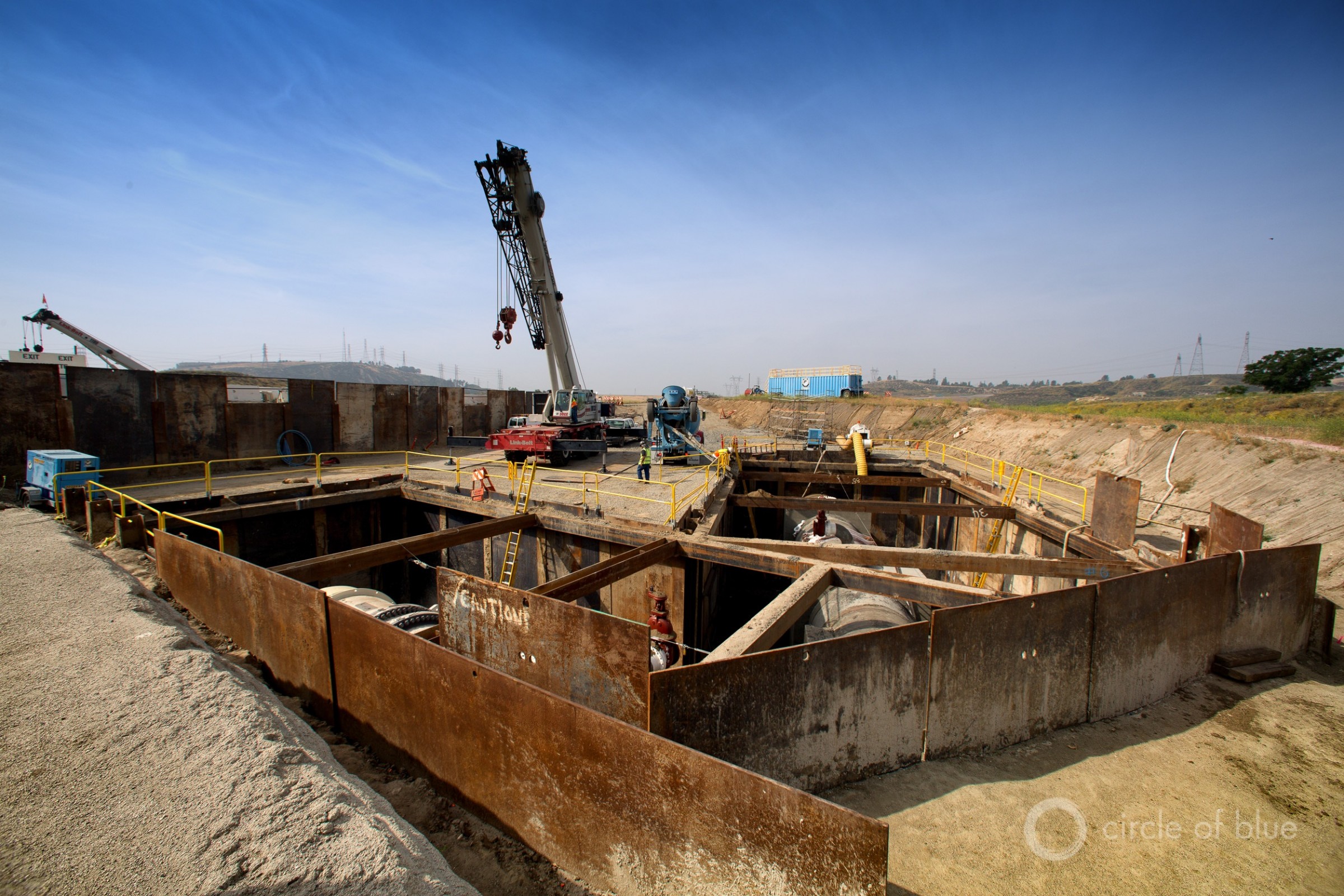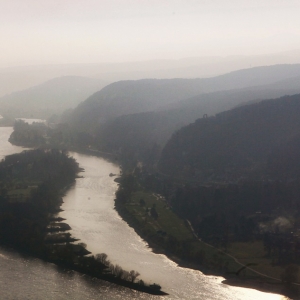Water leaders worry that rising prices — for everything from lead pipe replacements to treatment plant repairs — will cause a historic federal infrastructure investment to fall short of lofty expectations.

Along with other goods and services, inflation is pushing up the cost of water infrastructure projects. Photo © J. Carl Ganter/Circle of Blue
By Brett Walton, Circle of Blue – April 7, 2022
- Inflation is increasing both capital and operational costs for water utilities.
- In response, utilities are delaying projects, completing projects in phases, or absorbing higher costs.
- If high prices continue, federal infrastructure investments will result in less progress than anticipated.
Bacon. Gasoline. Lead pipe replacements.
Just like at the grocery store and service station, a dollar for U.S. water utilities does not buy as much as it did a year ago. Inflation is pushing up the cost of labor, materials, and equipment, and water leaders are worried that rising prices will cause a historic federal investment in the nation’s water and sewer systems to fall short of lofty expectations.
Kelly Green hears about the financial turmoil nearly every day. Green is in charge of water infrastructure financing for Michigan’s environment agency. Lead service line replacements that were expected to cost roughly $5,000 per line are coming in several thousand dollars more than that. Some communities are having to reduce the scope of the work, a downgrade that will lengthen the amount of time that the toxic pipes remain in use.
“Maybe they were thinking of removing 300 service lines, and now they’re going to remove 150 service lines instead,” Green told Circle of Blue. Almost everyone has been sidetracked by higher prices. “I have not heard of any community that is on target with what they originally budgeted.”
This is not what Congress had in mind when it provided a windfall over the last 13 months for the nation’s water systems. The American Rescue Plan Act, approved in March 2021, sent $350 billion to state, local, and tribal governments. Repairing water and sewer infrastructure was one of the authorized uses of the funds, and states have already allocated at least $10 billion to that purpose.
Then in November 2021, President Biden signed the Infrastructure Investment and Jobs Act, a bill he touted as a “once-in-a-generation investment” in the nation’s public works. The act provides $50 billion over five years for a range of critical water infrastructure needs: from replacing lead pipes and removing PFAS chemicals to long-needed repairs for water treatment plants and sewers.
The influx of federal money, however, is colliding with an economy in which prices are rising faster than they have since the Reagan administration.
Brian Jordan, a vice president at Tetra Tech, an engineering and consulting firm, said that cost pressures vary from project to project based on inputs. Prices of stainless steel, a part of many water systems, spiked in response to Russia’s invasion of Ukraine. Russia is a major producer of nickel, a component of stainless steel.
According to an Engineering News-Record index, prices of concrete pipe (16.2 percent), copper pipe (20.8 percent), fabricated steel (39.8 percent), and PVC pipe (35.6 percent) have soared in the last 12 months.
In general, Jordan has observed that price increases of 10 to 50 percent per project are not unusual right now.
“Labor is up, equipment is up, materials are up,” Jordan told Circle of Blue.
Rising Costs Rock All Boats
The problems in Michigan are shared nationwide. The Council of Infrastructure Financing Authorities represents state agencies that administer water infrastructure loan funds. Deirdre Finn, the executive director of CIFA, said that water projects in every state are seeing increased costs.
Finn recounted the story of one utility that was rocked by current economic conditions. A small community in North Carolina put a water project out for bid. When the response from an engineering firm came back last fall, the bid was 40 percent over the utility’s budget. The utility, Finn said, decided to pause the project.
Some utilities are willing to pay higher prices, if only out of necessity — or fear that prices might climb even higher. Finn said other utilities are breaking projects into phases, doing a little work at a time once funds are available. Some state agencies are increasing loan amounts to ensure that work is completed.
The pressure is not just for capital projects. The Los Angeles Department of Water and Power told Circle of Blue that certain materials and services — things like microchips, chlorine, and other treatment chemicals — have increased between 15 and 20 percent.
Altogether, inflation means hard choices for water utilities, Green said. Especially with replacing lead service lines.
“It’s going to slow the process a little bit as communities try and figure out what their highest priority is and what their greatest need is, because that money isn’t going to go as far as what they may originally have thought,” Green said.
The speed and severity of today’s inflation caught utilities by surprise, Jordan said. When asked how utilities react to bids that are much higher than expected, he compared it to cycling through the stages of grief.
Sue McCormick, the former CEO of the Great Lakes Water Authority, a regional service provider, told Circle of Blue that utilities need to be realistic about what they will achieve. At least in the short term, she said, the expected impact of increased federal infrastructure spending should be moderated until inflation pressures ease.
“I want to manage the public’s expectation that as much as we had hoped would be accomplished, it’s going to be impacted by today’s costs.”
Brett writes about agriculture, energy, infrastructure, and the politics and economics of water in the United States. He also writes the Federal Water Tap, Circle of Blue’s weekly digest of U.S. government water news. He is the winner of two Society of Environmental Journalists reporting awards, one of the top honors in American environmental journalism: first place for explanatory reporting for a series on septic system pollution in the United States(2016) and third place for beat reporting in a small market (2014). He received the Sierra Club’s Distinguished Service Award in 2018. Brett lives in Seattle, where he hikes the mountains and bakes pies. Contact Brett Walton





